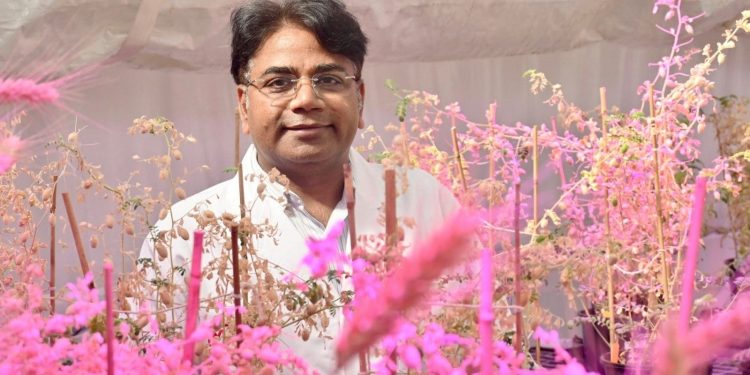New Collaborative Research to Enhance Australian Chickpea, Lentil, and Faba Bean Yields
Chickpea, lentil, and faba bean growers across Australia are set to benefit from significantly more productive crops within the next decade, thanks to a new collaborative, international research project aimed at improving crop yields. The $11.02-million multi-partner investment, with $6.1 million from the Grains Research and Development Corporation (GRDC), will focus on achieving improved genetic gain for yield in chickpea, faba bean, and lentil through genetic diversity. The project is led by Murdoch University.
Australian pulse breeders will gain access to advanced knowledge, tools, technologies, and novel sources of germplasm to broaden genetic diversity in pulse cultivars and ultimately drive yield gains. Professor Rajeev Varshney, project leader and director of Murdoch University’s Centre for Crop and Food Innovation, highlighted the limited genetic diversity as a significant barrier, resulting in yield improvement of less than 0.5 percent annually.
“Ultimately, we want to develop high-yielding, climate-resilient chickpea, lentil, and faba bean varieties which can deliver greater profitability to growers across Australia,” said Professor Varshney. “With this investment, we will be able to implement modern genomics approaches coupled with huge genetic diversity.”
Key Project Components
The project will partner with the International Center for Agricultural Research in the Dry Areas (ICARDA) to import new diverse germplasm for the target crops. Once the ICARDA germplasm data has been analyzed, DNA catalogues will be developed and shared with leading Australian pulse breeding programs. Researchers will employ genomic prediction, artificial intelligence, and speed breeding to identify and stack novel and superior DNA variants for yield and yield-related traits.
“We believe we can achieve a 1.5 percent increase in genetic gain by incorporating genetic diversity from other landraces and employing advanced breeding techniques and AI, which would be unprecedented,” noted Professor Varshney.
National and International Collaboration
The project will involve collaboration with national pulse-breeding programs, including Chickpea Breeding Australia, the National Lentil Breeding Program in Victoria, and the University of Adelaide-led National Faba Bean Breeding Program. A key output will be the development of PulseBase, a platform for hosting datasets generated through the project and other relevant existing datasets accessible for various pre-breeding and breeding programs.
Focus on Yield and Disease Resistance
Professor Varshney emphasized that the key traits researchers will be targeting from international germplasm are yield and improved disease resistance. He noted the importance of pulses for soil fertility and environmental sustainability, predicting increased uptake of the three crops in non-traditional growing areas, particularly across Western Australia.
Enhancing Australia’s Pulse Industry
Camilla Hill, GRDC genetic technologies manager, stated that the genetic diversity research is part of a broader uplift in investment in pulses, acknowledging their vital role in Australian farming systems. “By leveraging increased genetic diversity and advanced technologies, we aim to deliver tangible benefits to growers,” Dr. Hill said.
Project partners include the University of Queensland’s Queensland Alliance for Agriculture and Food Innovation, Agriculture Victoria Research, University of Adelaide, University of Sydney, NSW Department of Primary Industries, Curtin University’s Analytics for the Australian Grains Industry, and the International Center for Agricultural Research in the Dry Areas.
Error




